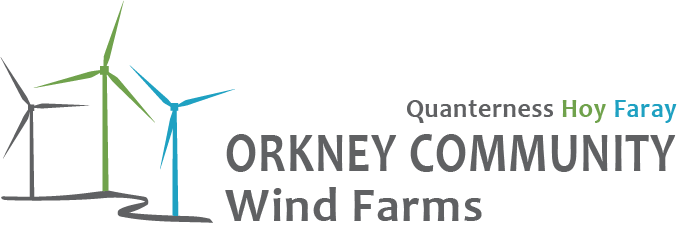Orkney’s Community Wind Farm Project takes a step forward with energy regulator Ofgem’s approval of a new electricity transmission link.
This approval follows Ofgem’s public consultation on the proposals of the project and the need for an electricity link from Orkney to the Scottish mainland.
To approve the ‘Needs Case’ for the cable, the regulator required a total of 135MW of renewable generation to justify a 220MW cable installation.
Orkney Islands Council will contribute nearly 90MW through Orkney’s Community Wind Farm Project, which made an essential contribution to meeting the ‘Needs Case’.
The Council’s wind farm project consists of three 6-turbine wind farms, each with planning approval, located at Quanterness in St Ola, Wee Fea in Hoy and on the island of Faray.
Since identifying the need for further development to contribute towards a new transmission cable back in 2016, a total of £2.5 million has been spent on developing the project to date.
During the initial site identification and feasibility studies, £575,000 was spent performing an Orkney wide site investigation and evaluation of potential sites. Following this assessment, the Council was able to identify three sites that met the requirements for developing a wind farm project that provided the best chance of securing planning permission and would contribute towards the Needs Case for a new transmission cable.
Following site identification, approximately £1.3 million was spent on progressing the projects through the Environmental Impact Assessment (EIA) and planning consent processes. This included site surveys, preparing EIA documents for the planning applications, and receiving technical advice. This stage resulted in all three sites receiving planning permission from the Scottish Government.
In addition, £60,000 has been spent on requirements needed to progress the wind farms and to meet Ofgem’s Needs Case. This included updating the project’s business case, securing grid applications, and applying for a Contracts for Difference.
Since the beginning of the project £540,000 has been spent on staff costs.
Currently, the projected costs for the procurement of turbines and construction for all three sites will be in the region £110 million.
The current financial assessment indicates the project would generate an average real profit of £5.5 million per annum for the Council, which over the 25-year lifespan of the project, would equate to a profit of nearly £138 million.
From an economic report that was recently published, a new electricity transmission link between Orkney and the Scottish mainland could be worth at least £371 million to the Orkney economy, rising to £807 million if the wave and tidal energy industry makes use of the cable too.
As well as generating significant income for the county, the projects will also provide an estimated annual payment of £144,000 per project into a ‘location-specific community benefit fund’, for local communities to drive transformational projects of their own.
Orkney Islands Council Leader, James Stockan, said: “We are absolutely delighted with today’s announcement from Ofgem, this is a giant leap towards Orkney achieving our energy aspirations. Once operational, it also opens up opportunities for a number of businesses to expand, increasing employment and boosting our local economy.
“Our projects team has worked diligently to ensure that the wind farm project would meet Ofgem’s conditions. Although a final decision has not been made as to whether or not Orkney’s Community Wind Farm Project will go ahead, the potential socio-economic benefits are enormous, and given the Council’s financial challenges alongside the cost-of-living crisis we are all facing, it is essential that we find new ways of generating income.
“The three wind farms will also help us meet not only our own carbon reduction aspirations but contribute to Scottish and UK Government targets too.”
The Council’s officer team are performing further site investigations and updating the business model. These findings will be presented to Elected Members next year who will then decide if the project will proceed.
